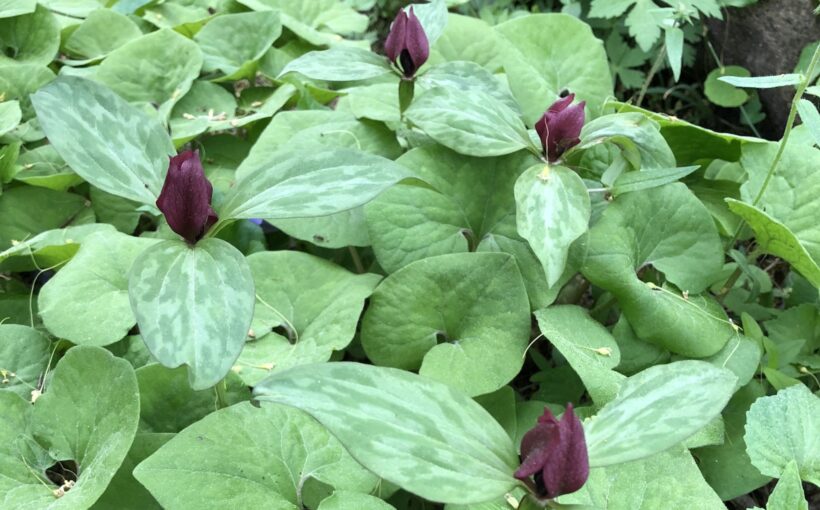Indiana woodlands are home to a bevy of here-today, gone-tomorrow spring ephemerals. These seasonal plants emerge and bloom before trees leaf out, then die back to dormancy for the rest of the year.
Get out this spring to see these beauties, before they’re gone for another year. Or plant some in your shade garden!
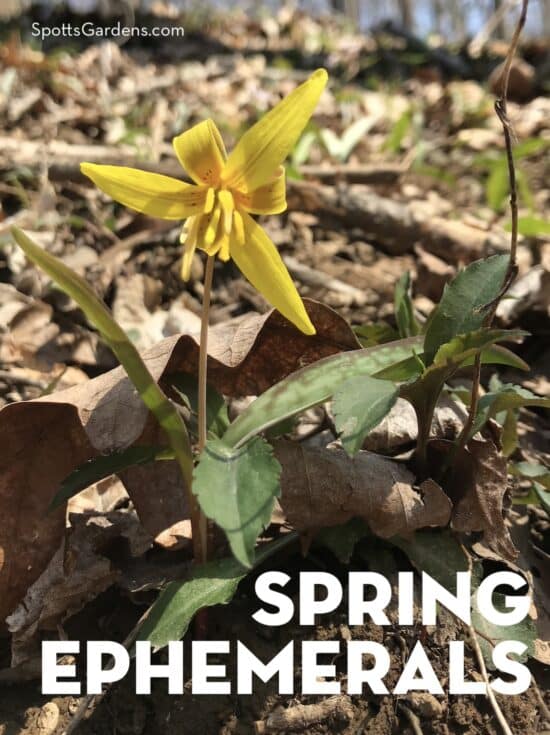
Bloodroot (Sanguinaria canadensis)
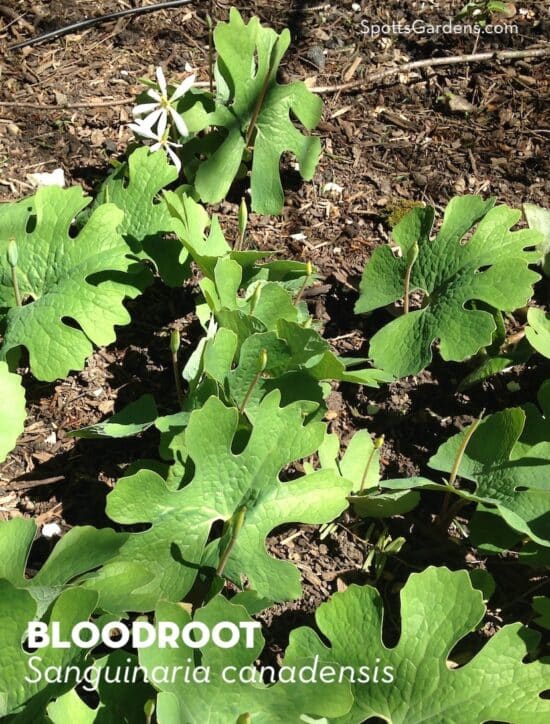
Each flowering stalk of Sanguinareia canadensis is wrapped by just one deeply scalloped leaf. A single white flower with eight to ten petals tops each of the stalks, which grow directly from the rhizomes underground (no stems for this plant!). Flowers open in the sun but stay closed on overcast days and at night.
These plants grow to about 6″ to 10″ tall and usually bloom in March in Indiana. The leaves continue to grow up to 9″ wide before the plant goes dormant in midsummer.
Find (or grow) bloodroot in average to rich soil in part shade to full shade. Bloodroot can handle drought, dry soil, and juglone from black walnuts.
Each part of the plant releases an orange-red sap when cut, which gives bloodroot its common name. The rootstock is caustic (and poisonous), so wear gloves when planting or transplanting.
Cutleaf Toothwort (Cardamine concatenata)
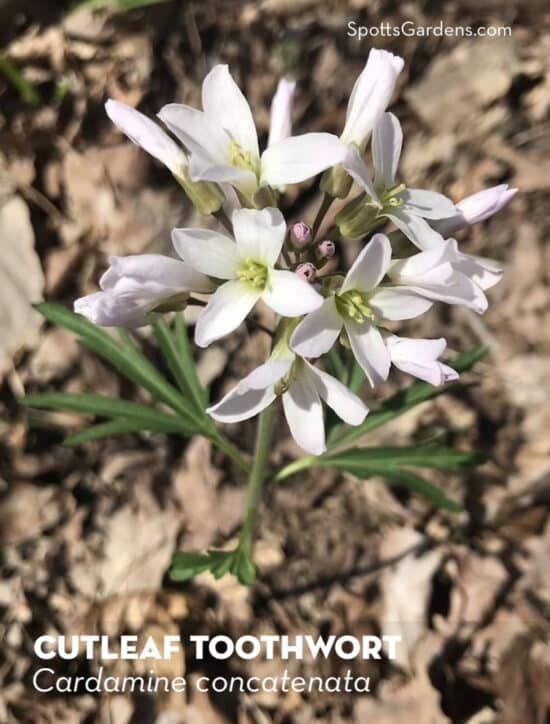
Cutleaf toothwort blooms a bit later than the other ephemerals in this post, usually in April or May in central Indiana. Cardamine concatenata‘s four-petaled flower is shaped like a cross around its stem. Three leaves circle the 8″ to 15″ stem halfway up. The stems grow directly out of the rhizomes, and this plant does not have basal leaves. Plants go dormant by early summer.
Plant cutleaf toothwort in rich, well-drained soil in part shade. It’s best grown from division when dormant, since this plant is hard to start from seed. Left to its own devices in optimal conditions, this toothwort will slowly spread by rhizomes to create colonies.
The name “toothwort” is believed to have come from the tooth-like bits on the rootstock. Another name for this plant is pepperwort; the edible roots have a radish-like bite.
Dutchman’s Breeches (Dicentra cucullaria)
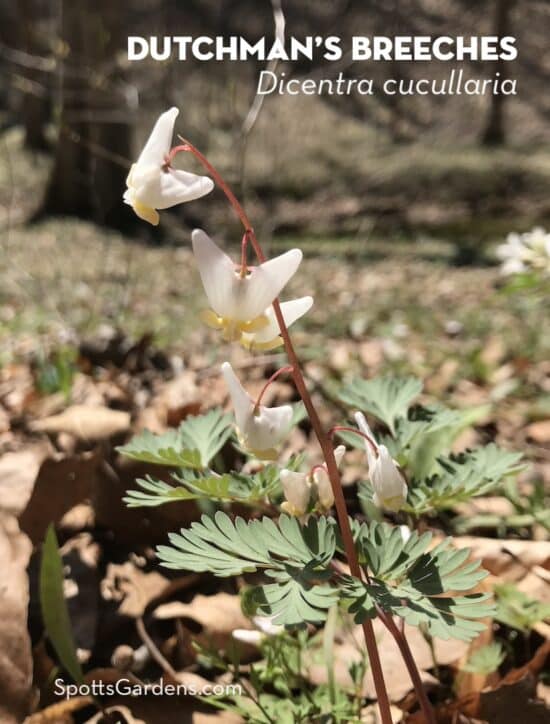
This graceful little wildflower grows to about 12″, sporting a white (or occasionally pink) flower with two spurs that stick up from either side of the stalk. Several flowers hang in a row from the naked stem. Dicentra cucullaria‘s deeply cut leaves grow directly from the rootstock, as do the flowering stems. It’s an early bloomer, usually flowering in March in central Indiana.
Dutchman’s breeches grows in average, well-drained soil in part to full shade. Avoid damp spots; this plant can’t handle wet soil in winter. Foliage dies back by midsummer.
The common name comes from the flower’s resemblance to a pair of pantaloons. Dutchman’s breeches is in the same genus (Dicentra) as bleeding heart; you can see the similarities in how the flowers hang in a line along the stem.
Rue Anemone (Thalictrum thalictroides)
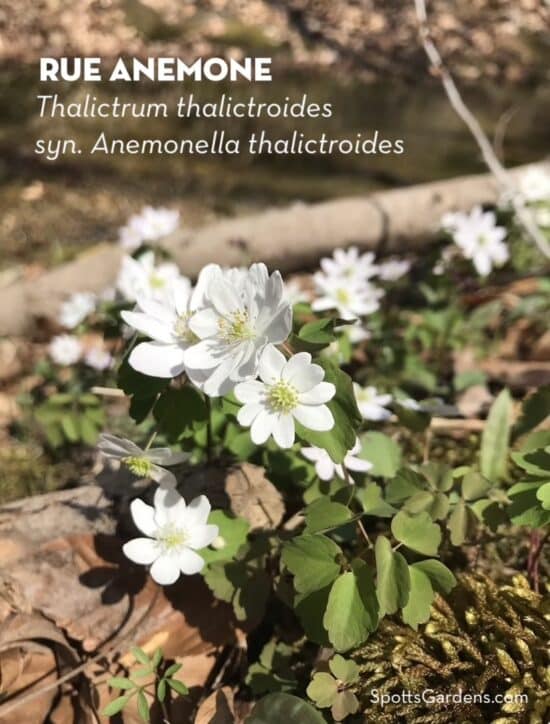
Growing 6″ to 9″, rue anemone sports white flowers with five to ten petal-like sepals. Each flower sits on its own stem above a ring of three-lobed leaves.
Thalictrum thalictroides prefers average soil and medium moisture in part shade. But this tough ephemeral can also handle heavy shade, drought, and dry soil. It grows best in sandy-humussy soils.
The common name rue anemone refers to the leaves’ resemblance to meadow rue (Thalictrum rochebrunianum) and the flowers’ resemblance to anemone.
Toadshade or Wood Lily (Trillium sessile)
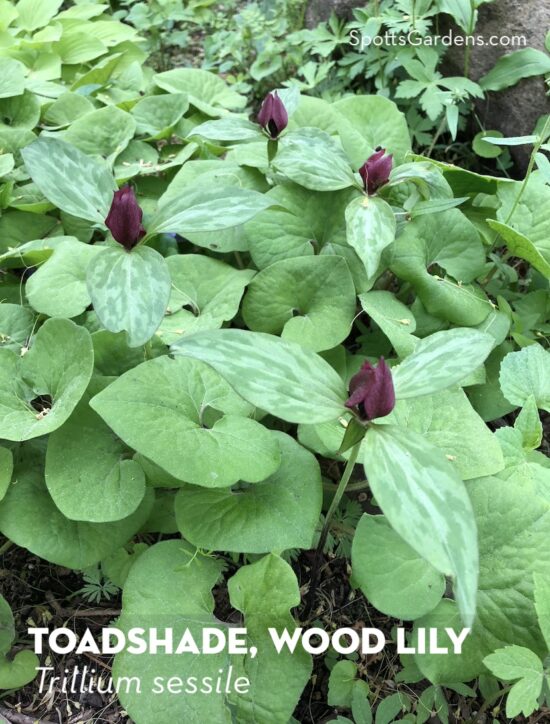
Toadshade is one of several Trillium species native to Indiana. Plants grow up to about 12″ tall. It sports three leaf-like bracts that have a mottled appearance. The three-petaled flowers of Trillium sessile are a maroon or brownish red and sit immediately above the bracts. (“Sessile” means attached directly at the base, or stalkless).
These spring ephemerals grow best in rich soil in part to full shade. Plants grow from rhizomes and will spread slowly if left to grow undisturbed. Foliage dies back by midsummer.
The genus name Trillium means “triple lily” and refers to the fact that leaves, petals, and sepals all occur in threes. Grow them in woodland gardens or shaded wildflower gardens; Missouri Botanical Garden says they’re not a good fit in perennial borders.
Virginia Bluebells (Mertensia virginica)
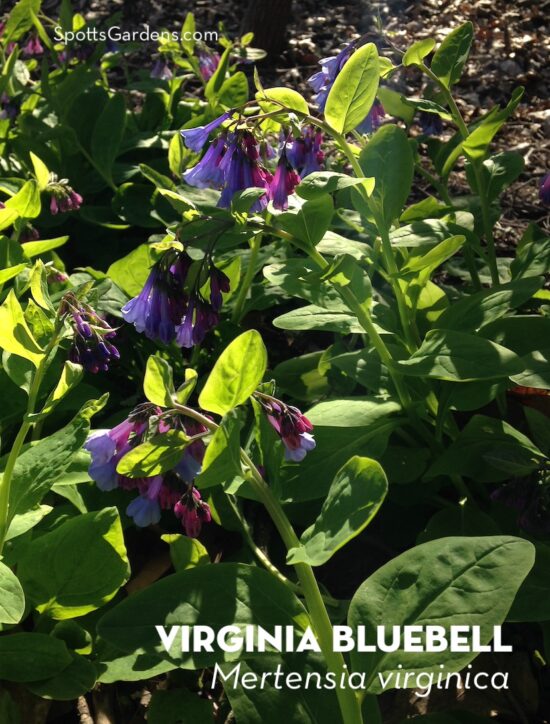
Easy to grow and instantly recognizable, Virginia bluebells spread a wash of blue over the woodland floor in April. This clump-forming plant grows about 1′ to 2′ high with clusters of trumpet-shaped flowers hanging from the terminal end. The buds of Mertensia virginica are a dark pink and open to true-blue flowers. Plants die back by mid-summer.
Virginia bluebells grow best in moist soil in part to full shade. These ephemerals are resistant to rabbits and tolerate being planted near black walnut.
Consider planting your Virginia bluebells among plants that will expand once they go dormant. Ferns and hostas are both good partners.
Wild Columbine (Aquilegia canadensis)
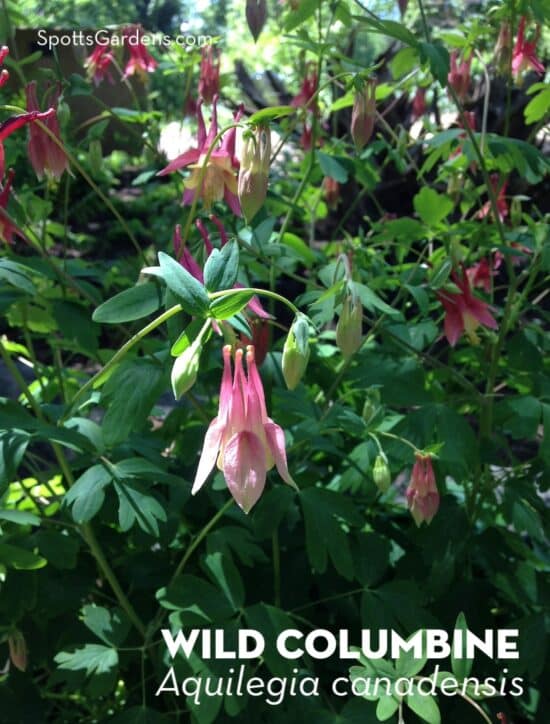
The bells of Aquilegia canadensis most commonly bloom in April in central Indiana. The airy foliage resembles that of meadow rue (Thalictrum). When happy, wild columbine self-seeds freely.
Wild columbine prefers rich soil and full sun to light shade. It tolerates rabbits (and deer!) as well as drought and dry soil. But to keep the foliage looking good well into midsummer, keep the soil moist.
Wild columbine bells range from true red and yellow to light pink and soft yellow. Hummingbirds love them! Columbine makes a great cut flower as well.
Yellow Trout Lily (Erythronium americanum)
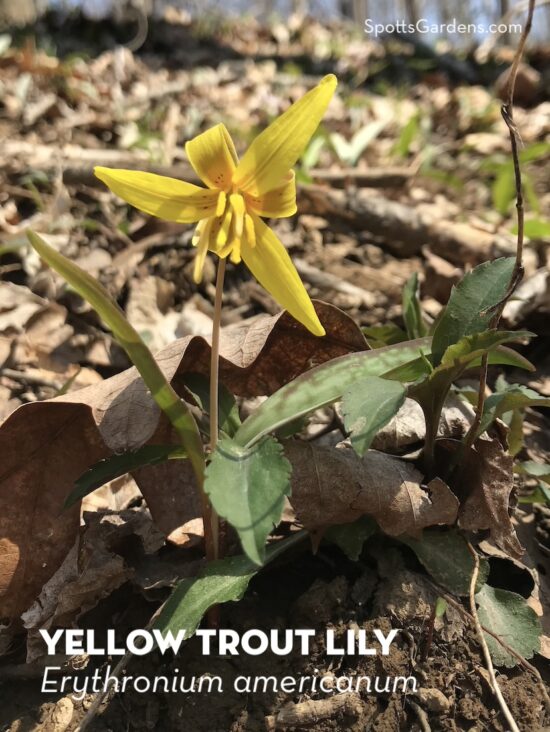
Yellow trout lily sends up a single stem of up to 6″ and topped by a yellow bell- or lily-shaped flower. Most Erythronium americanum plants have two leaves mottled in purple and green, but non-flowering plants in colonies may have only one leaf.
Grow yellow trout lily in part to full shade and moist, acidic soil. It doesn’t transplant well, so plant from corms exactly where you want them to grow.
Other names for this spring ephemeral include yellow adder’s tongue (because the flower looks like an open snake mouth) and yellow fawn lily (because of the spots on the leaves and the reported resemblance of the two leaves to a fawns ears). Another name is yellow dog-tooth violet, because the corms supposedly look like dog teeth and the flowers occasionally look like violets. Despite the name, Erythronium americanum is not a species of violet.
Add Spring Ephemerals to Your Garden
If you’re ready to elevate your shade garden with these spring ephemerals, we can help! Contact us today to schedule a free estimate.
Thanks to our garden designer Marie Becker for these photos!
